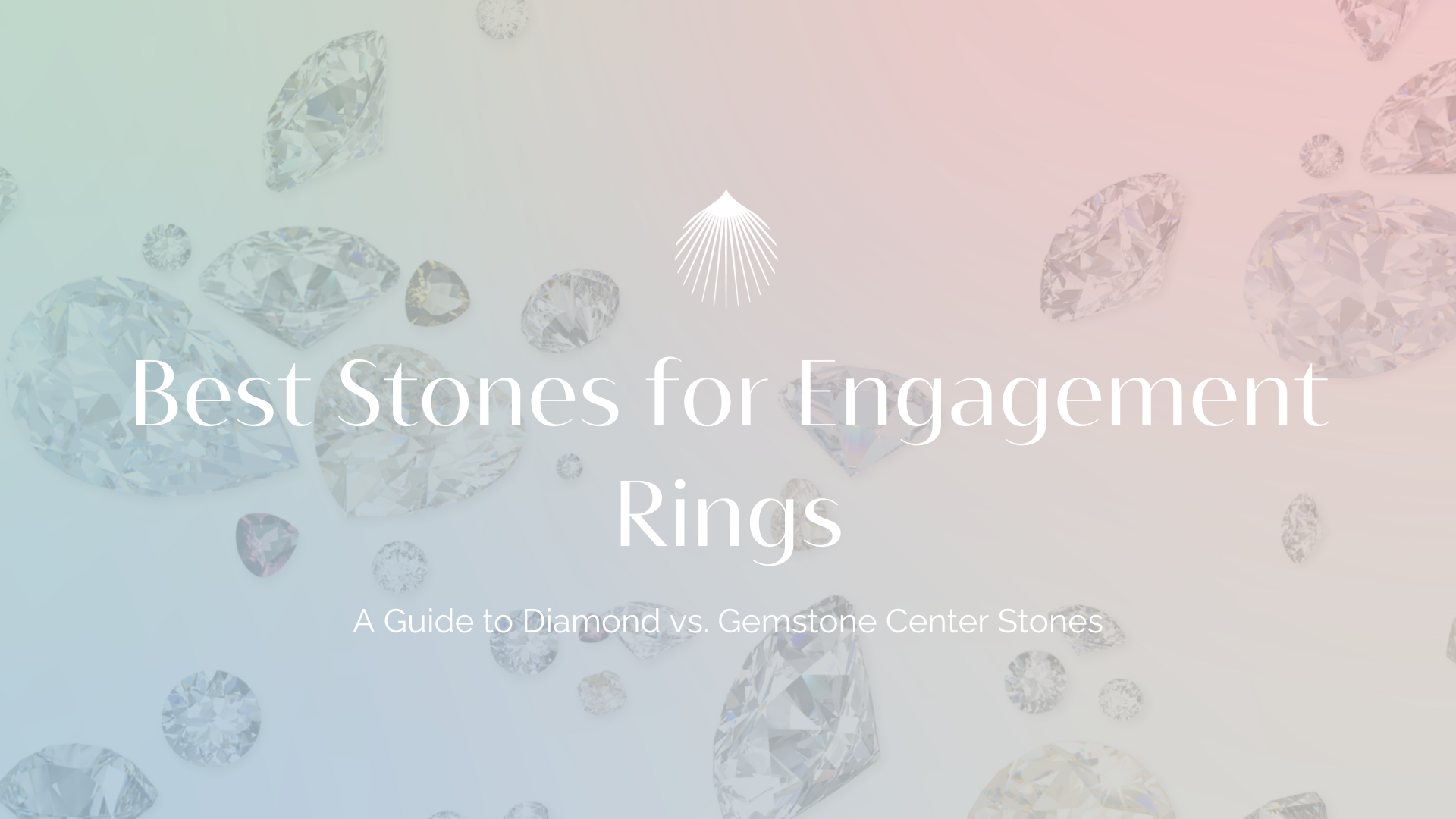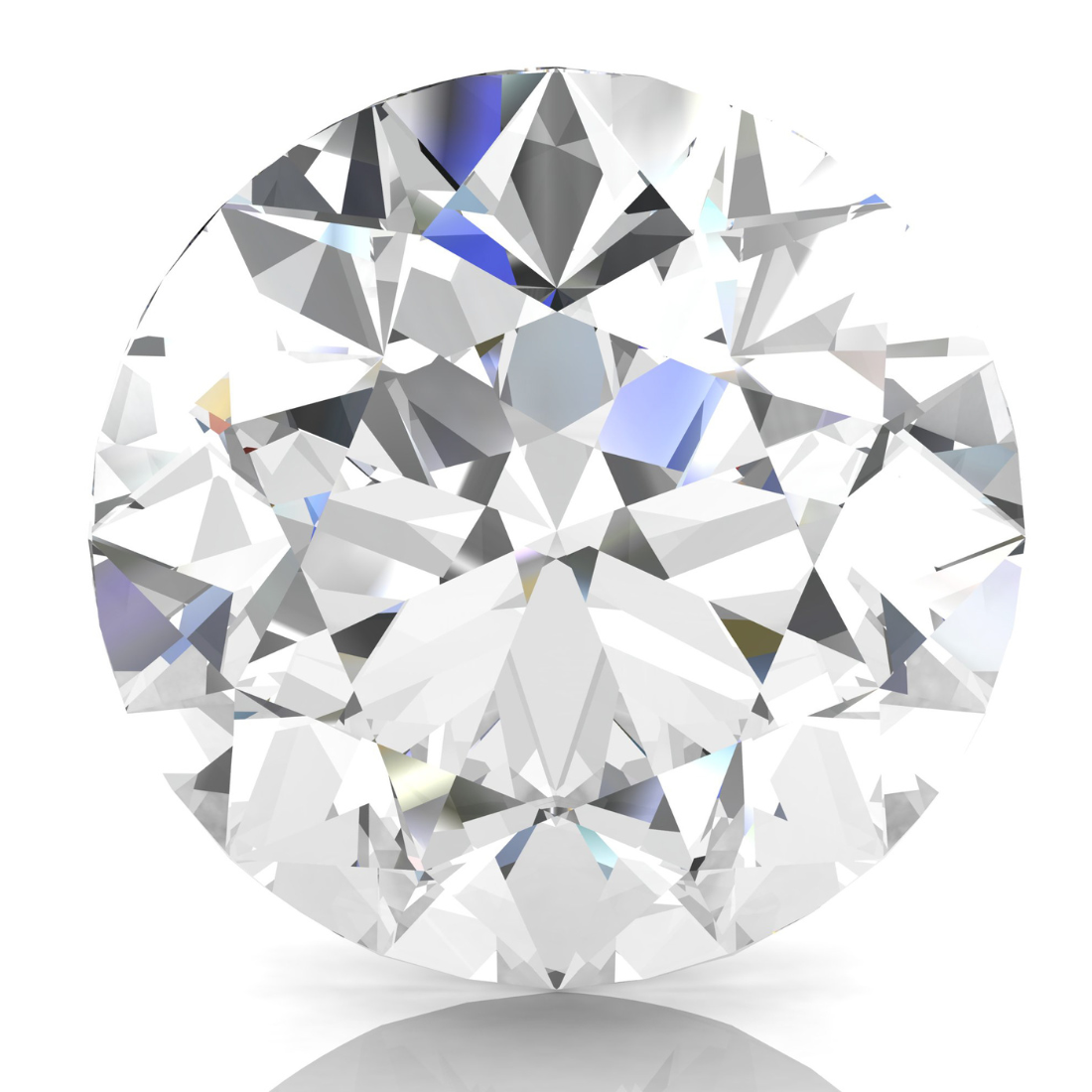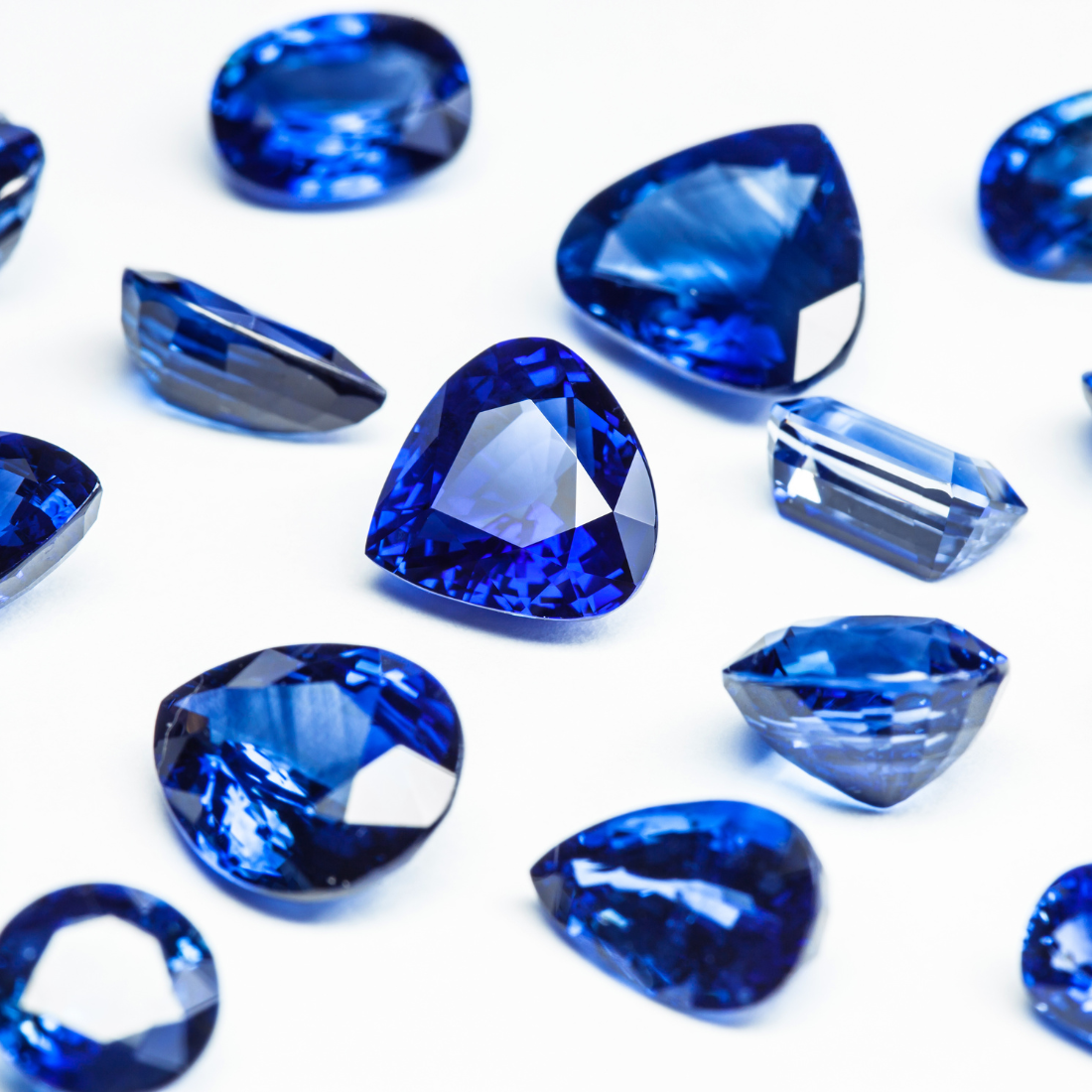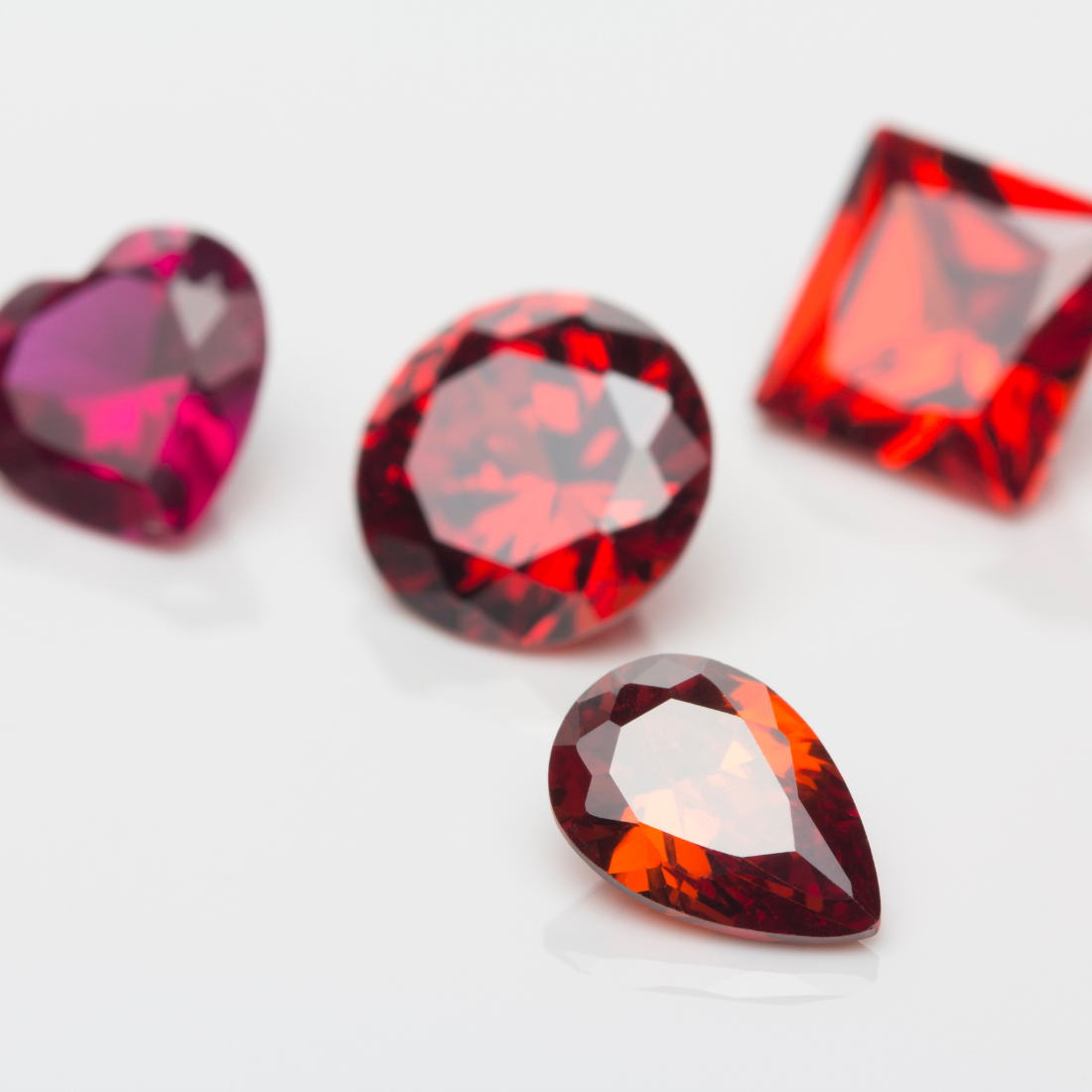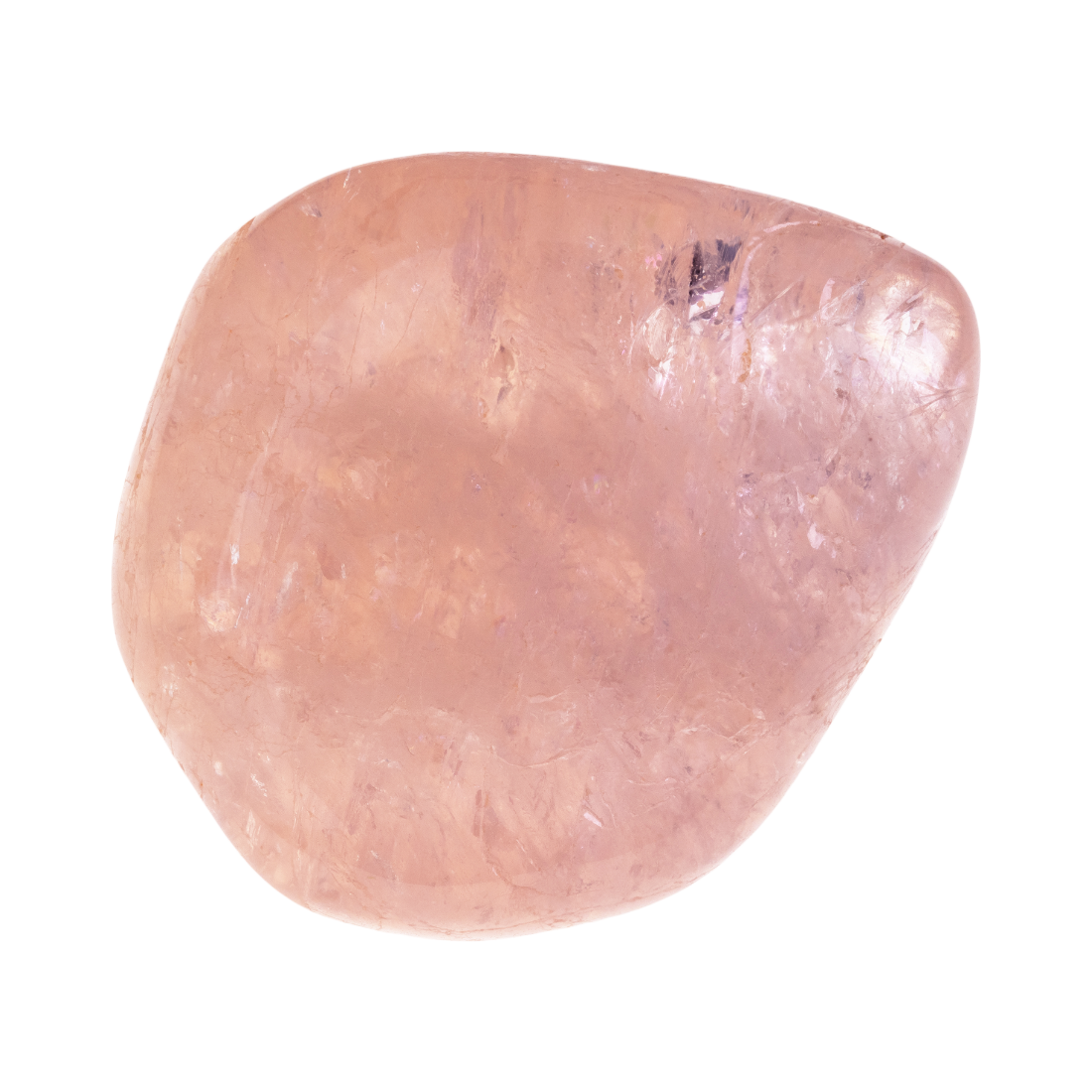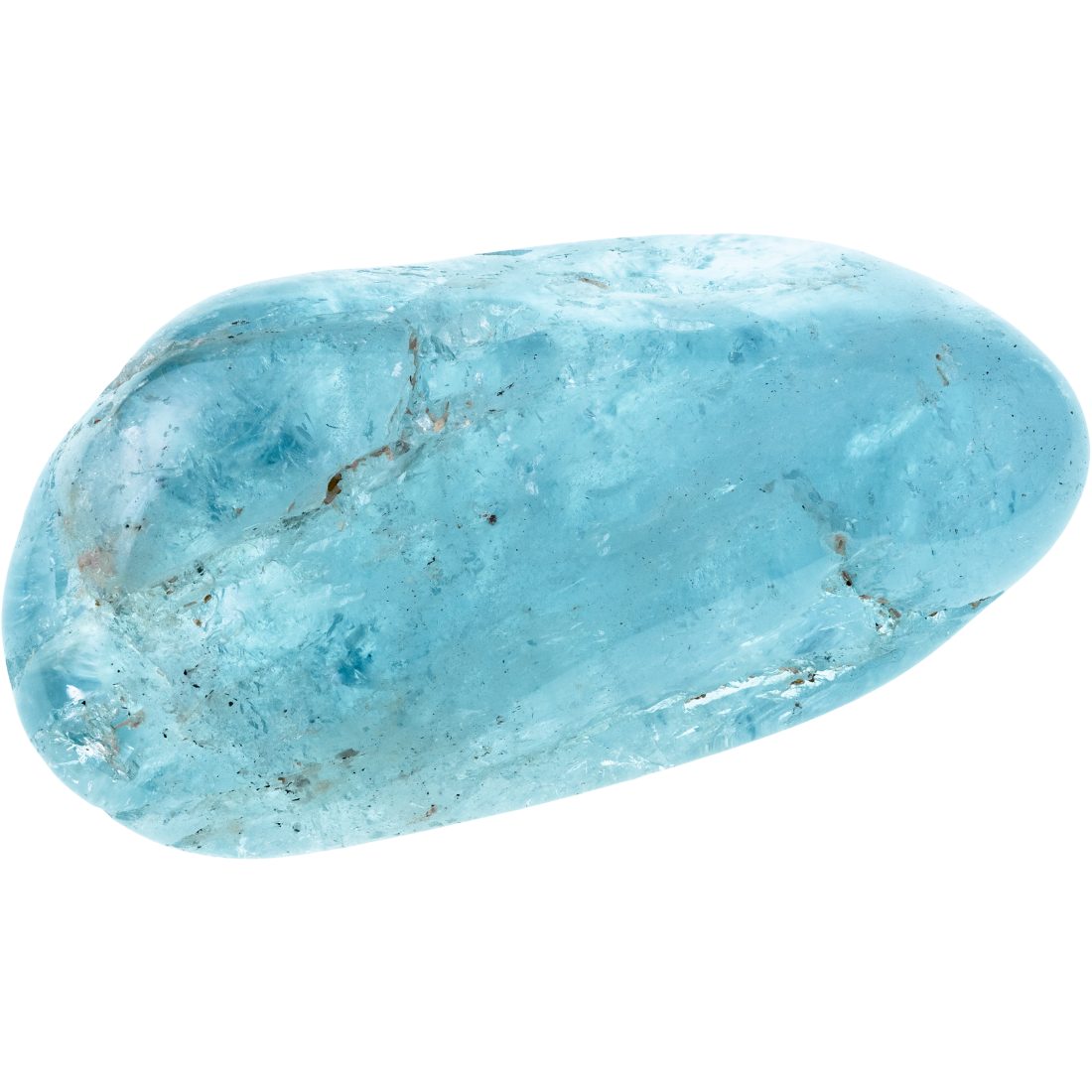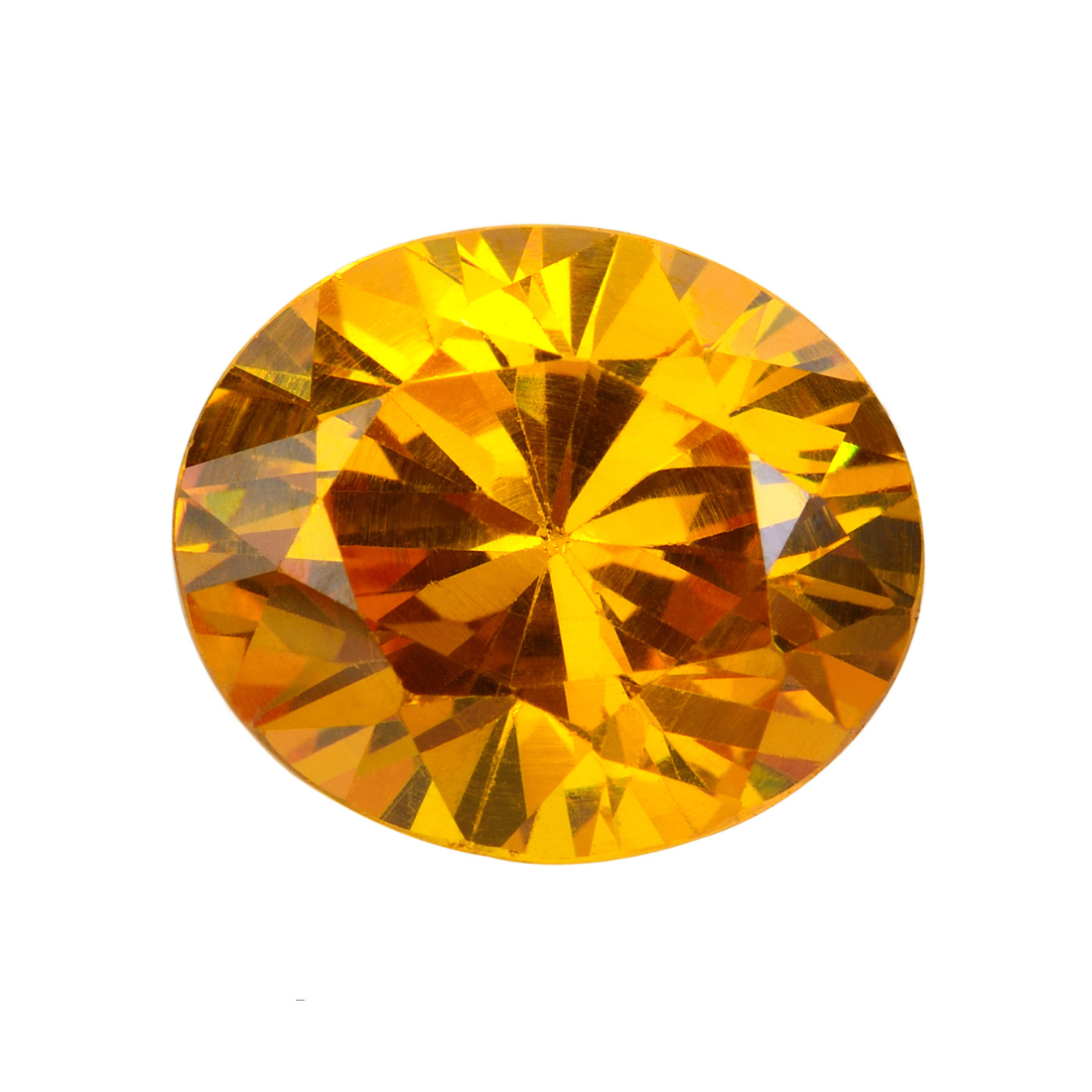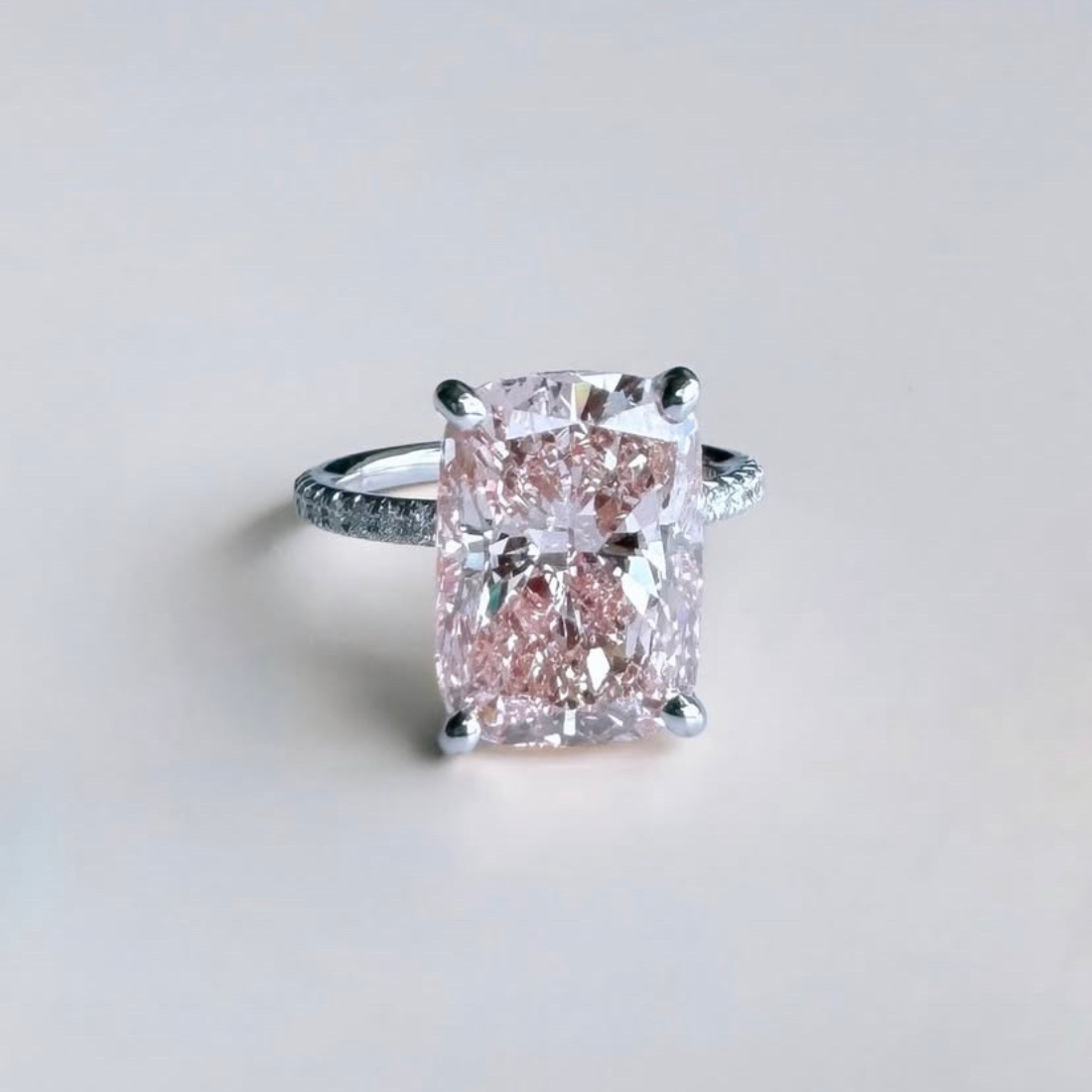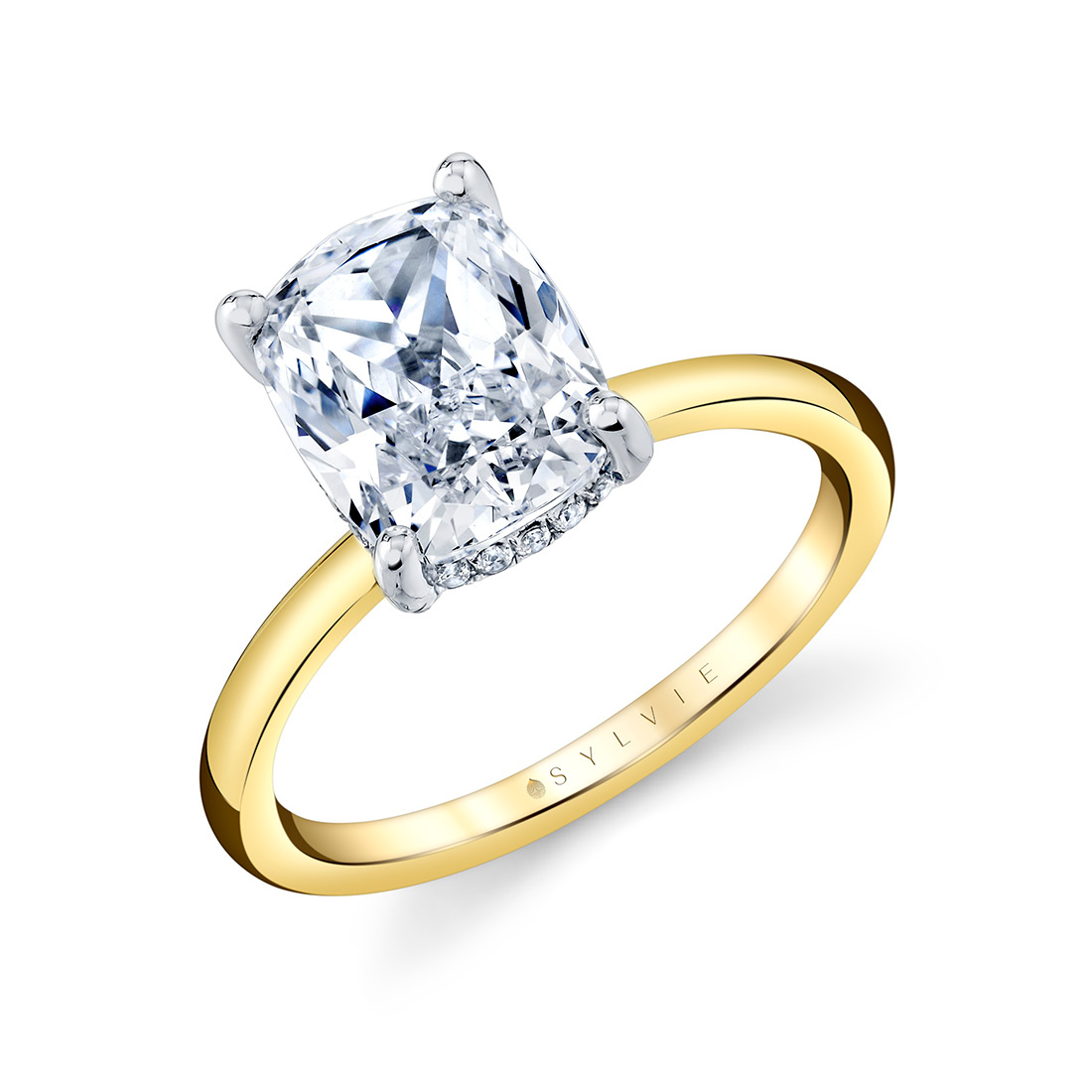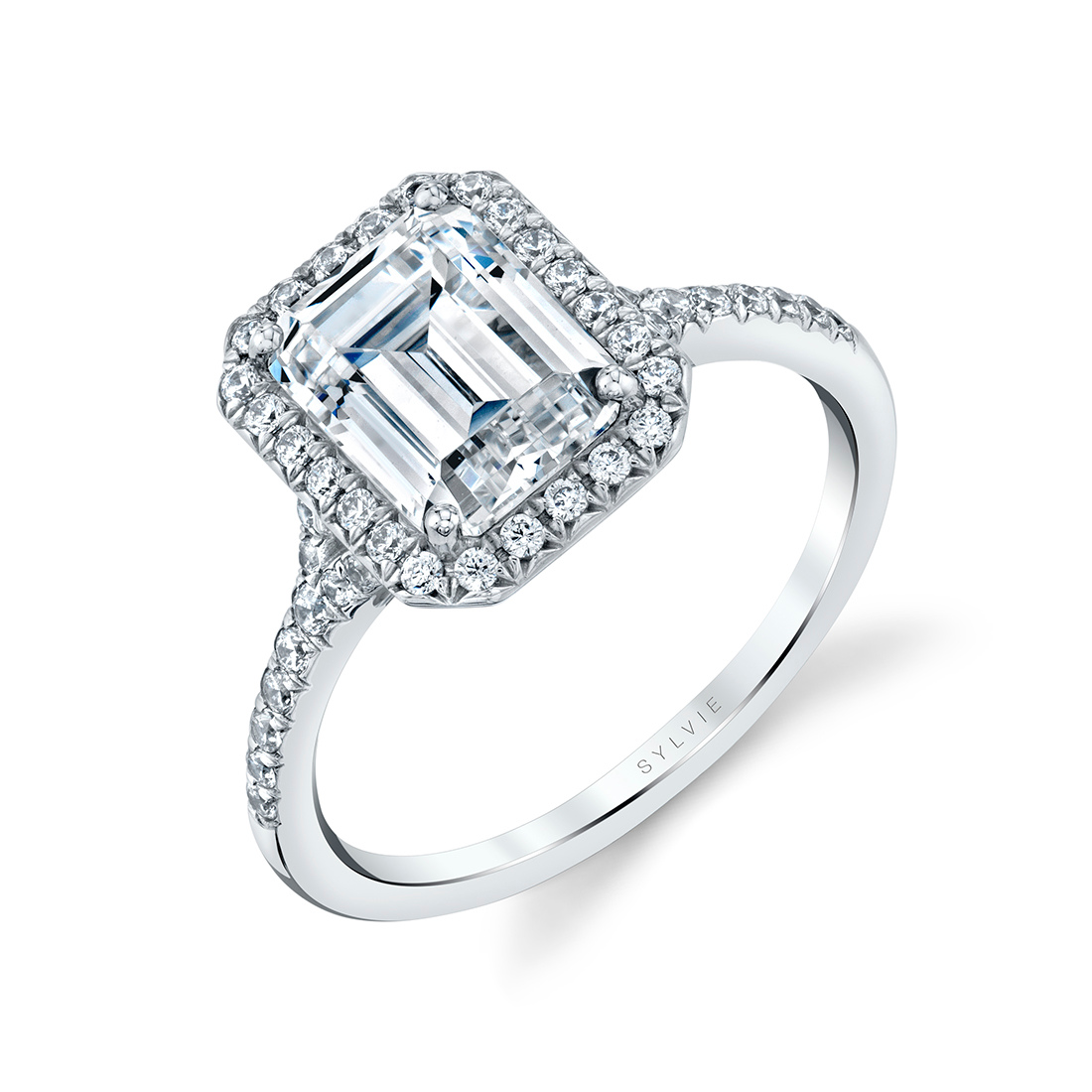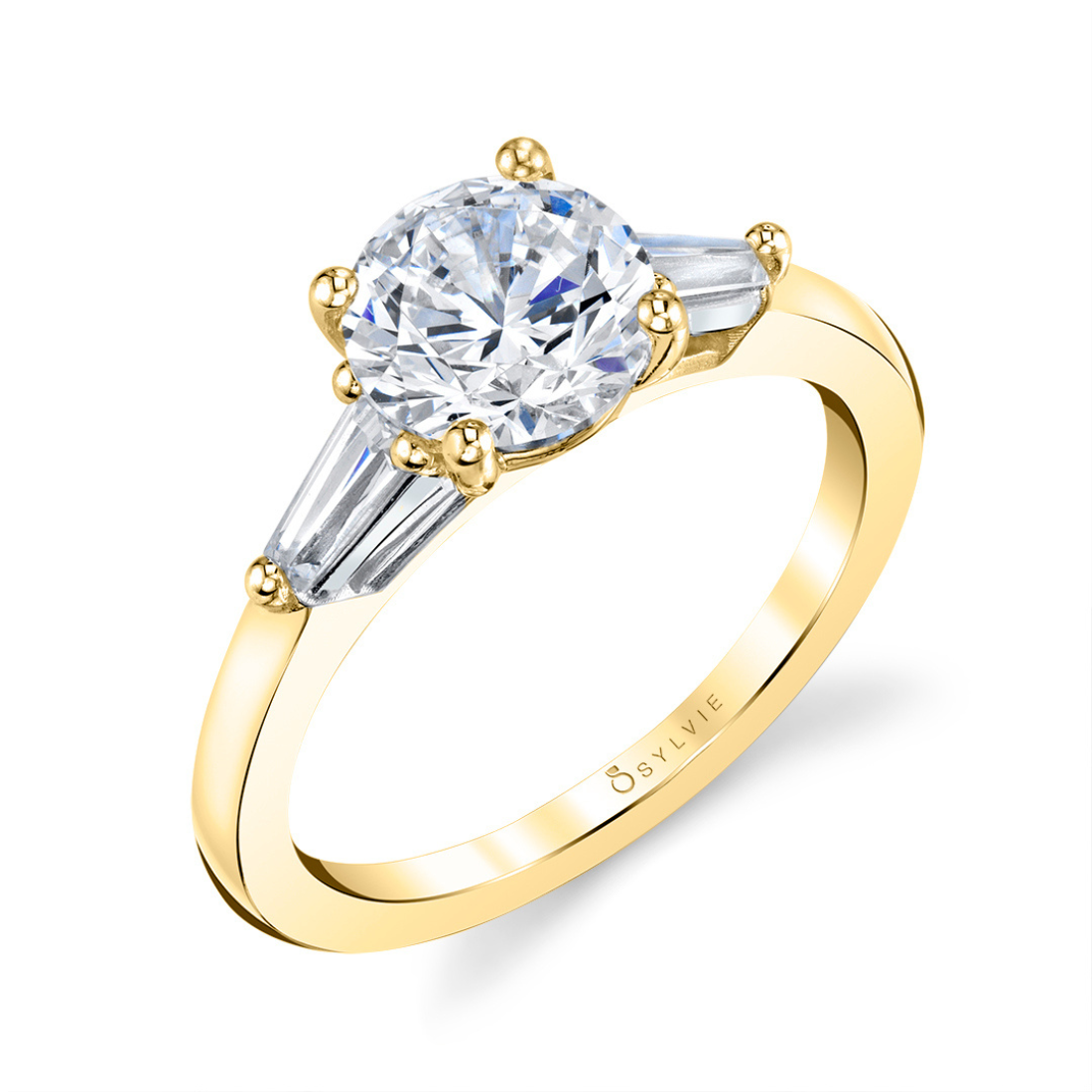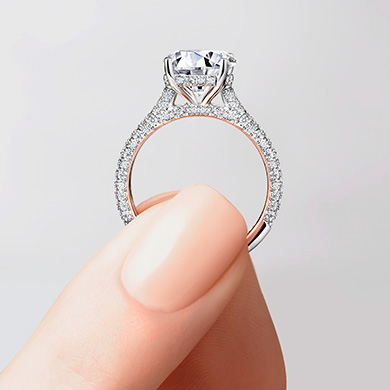Engagement rings are more than adornments; they embody love and commitment, personal style, and lasting beauty. Choosing the best stones for engagement rings means finding a gem that balances beauty with meaning, and durability with emotional depth. Whether you choose a classic natural diamond, known for its unmatched hardness and brilliance, or a colored gemstone like sapphire, emerald, or ruby that conveys vibrant symbolism, selecting the perfect stone requires gracefully balancing visual appeal, durability, and personal significance. In this guide we’ll explore what makes a gemstone suitable for everyday wear, how color and symbolism influence your decision, and why your stone choice matters just as much as your setting.
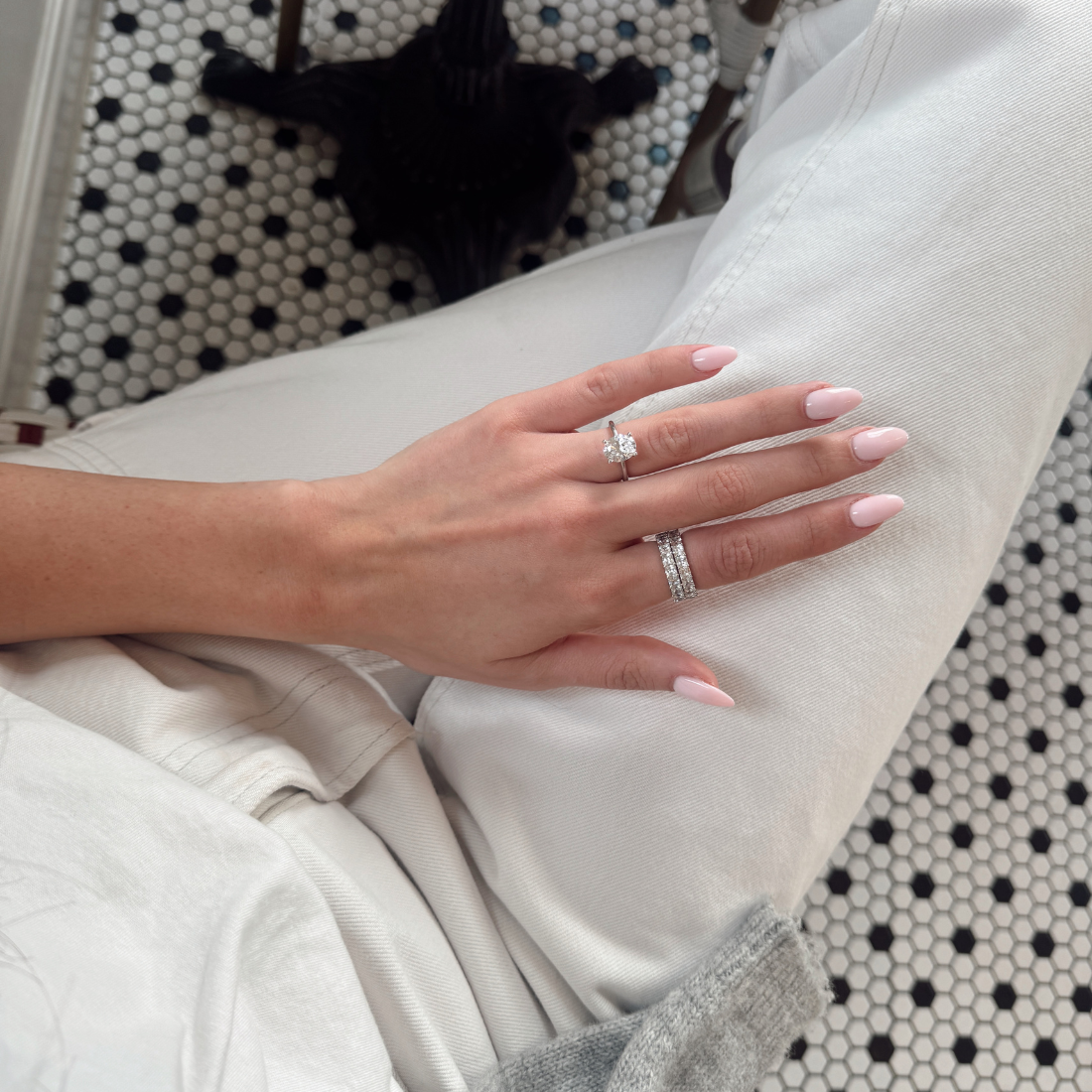
(from top to bottom) Tulira Oval Cut Solitaire Diamond Petal Prong Engagement Ring – Shay, Asscher Cut Diamond Eternity Band – B108, and Cushion Cut Diamond Eternity Band – B107
What Makes the Best Stones for Engagement Rings
Choosing a gemstone isn’t just about aesthetics. It’s about longevity, symbolism, and how the gemstone you choose for the center stone of your engagement ring fits into your daily life. The best stones for engagement rings must meet a range of criteria from physical durability to emotional resonance. Understanding how factors like hardness, toughness, color, and sourcing affect your stone choice helps ensure your engagement ring stays beautiful, meaningful, and structurally sound for years to come.
Mohs Hardness and Durability of Stones for Engagement Rings
Hardness determines how well a gemstone resists surface scratches, which is a key consideration when selecting a center stone for a ring you will be wearing everyday. Measured on the Mohs scale, diamonds top the chart at 10, which is why they have remained the benchmark for engagement ring stones, because they combine ultimate hardness with exceptional sparkle.
Alternate gemstones like sapphires and rubies, at a rating of 9, follow closely, offering vivid color without sacrificing scratch resistance. By contrast, gems like emeralds (7.5–8) and opals (5.5–6.5) provide unique hues but require protective settings to guard against chips and surface damage. When selecting your center stone, weigh its aesthetic appeal against its practical needs to ensure your ring remains both stunning and sturdy.
Toughness and Longevity of the Best Gemstones for Engagement Rings
While hardness refers to surface resistance, toughness describes how well a stone resists breaking, chipping, or cracking from impact. For example, diamonds are very tough, but emeralds, despite their decent hardness, tend to have natural inclusions that make them prone to chipping.
Stones with lower toughness can still be used beautifully in engagement rings, but their settings become crucial. Bezel or halo engagement ring settings offer more protection than exposed prongs, especially for rectangular or step-cut stones with pointed corners.
Chemical Stability and Heat Resistance in Engagement Ring Stones
The stability of a gemstone refers to how well it handles exposure to chemicals, light, and temperature changes. Diamonds, sapphires, and rubies all exhibit excellent stability, meaning they are able to withstand everything from cleaning products to summer heat without discoloration or damage.
By contrast, opals, pearls, and even turquoise can be sensitive to harsh environments. Some stones may discolor with UV exposure or become brittle under sudden temperature shifts. If you’re considering a more fragile gemstone, be sure to ask about how it responds to everyday conditions, and whether it will require special care.
Sourcing, Availability, and Ethics of Gemstones for Engagement Rings
When selecting the best stones for engagement rings, ethics and transparency matter just as much as appearance. At Sylvie, we take pride in sourcing only natural, ethically vetted diamonds for every engagement ring setting. From pavé bands to hidden halo accents, each diamond or gemstone is carefully selected for quality, character, and responsible origin.
Because we offer semi-mount engagement rings, your chosen authorized Sylvie retailer will guide you through the process of selecting the perfect center stone, whether that’s a natural diamond, sapphire, or another meaningful gem. They’ll help ensure it meets the same high standards of traceability and quality that we uphold in every design.
Color Meaning and Symbolism of Popular Stones for Engagement Rings
Color carries meaning. When choosing the best stones for engagement rings, many couples are drawn to gems that reflect their values, shared experiences, or hopes for the future.
- A diamond symbolizes enduring strength and unparalleled clarity. As the most iconic engagement ring stone, it speaks to a love built on trust, resilience, and unwavering commitment.
- A sapphire, known for its deep blues and rare color variations, conveys wisdom, sincerity, and faithfulness, qualities perfectly suited to a life partnership.
- A ruby exudes passion and courage. Its bold red hue reflects the vibrant energy of a relationship that embraces intensity and emotion without hesitation.
- An emerald represents growth, renewal and harmony, ideal for couples embarking on new chapters together.
Choosing a gem that resonates with your values and relationship milestones transforms your engagement ring into a deeply personal statement.
Investment and Heirloom Value of Engagement Ring Gemstones
Beyond beauty and symbolism, the gemstone you choose for your engagement ring can become part of a legacy. High-quality gemstones are appreciated over time, particularly rare natural diamonds and well-sourced sapphires or rubies from famed mines.
A certified natural diamond with excellent cut, color, and clarity commands strong resale and trade-in values. Equally, responsibly mined colored gemstones from reputable suppliers attract collectors and connoisseurs. When you select a stone with long-term value, you’re not just investing in a ring, you’re creating a family heirloom that tells a story for generations.
Exploring Popular Stones for Engagement Rings
When it comes to engagement rings, many couples gravitate toward diamonds because of their iconic sparkle and enduring popularity. Yet, colored gemstones have gained traction for offering distinctive hues and personalization at a variety of price points. Understanding how diamonds and gemstones differ in appearance, cost, and care helps you make an informed choice that aligns with your budget, style preferences, and lifestyle. Let’s take a look at some of the most popular gemstones for engagement rings.
Diamonds – The Timeless Classic
Timeless, versatile, and unmatched in durability, diamonds rank highest in both hardness and popularity for engagement rings.
The 4cs of diamonds, which are cut, color, clarity, and carat weight, form the foundation of diamond grading. Of these, cut has the greatest impact on brilliance, or how the stone reflects light. Even a modestly sized diamond can appear radiant when proportions are expertly balanced.
As the April birthstone, diamonds are often chosen for their symbolism of purity and strength. They are also associated as the birthstone for Aries, representing resilience, determination, and leadership. A diamond offers a bold and timeless reflection of that fire-sign energy for Aries engagement rings.
Sapphires – A Symbol of Loyalty
Known for its velvety blue hue, sapphire symbolizes trust, loyalty, and sincerity, which are traits that make it especially meaningful in an engagement ring. With a Mohs rating of 9, sapphire ranks just below diamond in durability, making it a smart option for daily wear and engagement rings for active women.
Though blue is the most well-known, sapphires also occur in pink, yellow, white, green, and even rare peach tones like padparadscha. This variety offers couples a wide palette of options while maintaining a cohesive aesthetic when paired with diamonds or mixed metals.
As the September birthstone, sapphire is closely tied to personal truth and spiritual focus. It’s also linked to Virgo birthstones, representing clarity, loyalty, and grounded love, making sapphire a meaningful choice for Virgo engagement rings. In a Sylvie design, sapphires can be used as accent stones or as the featured center, lending classic symbolism a personal twist.
Rubies – Passion and Power
Few stones make a statement like a ruby. With its deep red tone and enduring symbolism of passion, courage, and vitality, ruby is a favorite among those who want their ring to feel bold, confident, and alive with meaning.
Rubies also score a 9 on the Mohs scale, making them a durable and enduring choice. That said, rubies often contain natural inclusions, which are part of their unique character. These inclusions don’t necessarily detract from the stone’s beauty, but protective settings, such as halos or bezel styles, can help preserve structural integrity.
As the July birthstone, ruby is celebrated for its fiery spirit and emotional depth. It is strongly associated with Cancer birthstones, offering protection and deep emotional resonance. For Cancer engagement rings, setting a ruby as the center stone reflects a nurturing but powerful energy. When paired with Sylvie’s thoughtful design, a ruby center stone adds depth and warmth to your ring—an enduring symbol of fearless love.
Emerald – Romantic Renewal
There’s something unmistakably romantic about an emerald. Its lush green tone evokes growth, renewal, and harmony, qualities that resonate deeply with couples embarking on a lifelong journey together. For centuries, emeralds have symbolized wisdom and clarity of thought, making them a poetic and refined choice.
With a Mohs hardness of 7.5 to 8, emeralds are slightly softer than sapphires or diamonds and often contain natural inclusions, sometimes called “jardin.” These inclusions add character but can also create structural vulnerability, especially along edges and corners. For this reason, emeralds should be set in protective settings to reduce the risk of chipping.
As the May birthstone, emeralds are associated with abundance and emotional balance. They are also the definitive choice for Taurus birthstones, symbolizing loyalty, sensuality, and inner peace. For those interested in Taurus engagement rings, an emerald offers a deeply grounded, romantic alternative. Their vivid color and old-world charm lend a timeless quality to any engagement ring design, perfect for the bride drawn to both romance and individuality.
Unique and Trending Stones for Engagement Rings
While diamonds, sapphires, rubies, and emeralds remain the benchmark for engagement rings, alternative colored gemstones have surged in popularity for their unique hues, rich symbolism, and often more accessible price points. These unique and trending stones for engagement rings bring fresh color palettes, romantic symbolism, and distinctive beauty to any engagement ring design.
Morganite – Soft Romance in Pink
With its delicate blush hue, morganite has quickly become one of the most popular alternatives to traditional stones. As the October birthstone in some modern traditions and associated with Libra birthstones, morganite symbolizes compassion, balance, and love. Its pastel tone pairs beautifully with rose gold engagement rings, enhancing its warm, romantic glow.
On the Mohs scale, morganite ranks around 7.5–8, which makes it durable enough for regular wear but more prone to scratches than diamonds or sapphires. For this reason, protective settings are ideal. For couples drawn to Libra engagement rings or simply looking for something graceful and feminine, morganite is a meaningful choice that balances beauty with affordability.
Aquamarine – Calm and Cool
A pale blue gem that evokes serenity, aquamarine symbolizes calm communication and clarity. As the March birthstone and linked to Pisces birthstones, aquamarine carries associations of emotional depth and tranquility, qualities often mirrored in relationships that value peace and understanding.
On the Mohs scale, aquamarine scores 7.5–8, giving it moderate durability. While harder than opal or pearl, it still requires some care to avoid chipping or scratches. A protective setting can extend its wearability for daily use. For those seeking a Pisces engagement ring or other engagement ring styles, aquamarine offers an intuitive connection to water, healing, and emotional flow,making it as symbolic as it is beautiful.
Topaz – Versatile and Colorful
Few stones offer the variety of topaz, available in shades of sky blue, golden yellow, pink, and the highly coveted Imperial topaz in rich orange tones. With an 8 on the Mohs scale, topaz offers durability and resilience, making it a practical yet vibrant choice for engagement rings.
As the November birthstone, topaz is linked to both Scorpio birthstones and Sagittarius birthstones, depending on the zodiac calendar. It symbolizes energy, strength, and abundance. These associations make topaz a meaningful option for couples who want a gemstone that blends symbolism with wearability. Affordable compared to many of the big four gemstones, topaz allows for larger carat sizes without sacrificing style. In a Sylvie setting, it can be styled as a dramatic center stone or paired with accent diamonds for a distinctive two-tone engagement ring look.
Moonstone, Spinel, Garnet, and Other Standouts
For brides who want something unexpected, there are additional gemstones for engagement rings that carry distinctive character and symbolic weight.
- Moonstone (Mohs 6–6.5) glows with an ethereal shimmer called adularescence, symbolizing intuition and new beginnings. It is associated with June birthstones alongside pearl and alexandrite, and often linked to Cancer birthstones for its emotional depth. Though softer and best suited for occasional wear, moonstone remains a mystical and romantic choice.
- Spinel (Mohs 8) offers an affordable but striking alternative to ruby or sapphire. Found in shades of red, pink, and blue, it has strong brilliance and symbolic ties to rejuvenation. Spinel has no official birth month designation but is often recommended for those seeking individuality without compromising durability.
- Garnet (Mohs 6.5–7.5) is known as the January birthstone and is associated with Capricorn birthstones. Its deep red hue represents passion, commitment, and perseverance, making it a powerful option for couples who want a gemstone with bold energy.
Each of these alternatives may require more specific care or protective settings, but in a thoughtfully crafted Sylvie design, they become wearable symbols of individuality, perfect for anyone seeking a ring that stands apart from tradition.
Matching the Best Stone to Your Engagement Ring Setting
Once you’ve narrowed down the type of stone you want, the next decision is how it will be showcased in the setting. The beauty and longevity of an engagement ring depend not only on the gemstone but also on the setting that holds it. Certain settings enhance brilliance and color, while others provide needed protection for softer stones. Understanding how stones interact with solitaires, halos, vintage details, and three-stone styles ensures both visual harmony and practical wearability.
Best Stones for Solitaire Engagement Rings
Solitaire engagement rings highlight the center stone with minimal distraction. Diamonds are the most common choice for solitaires because of their unmatched durability and brilliance, but sapphires and rubies also work well thanks to their hardness and ability to withstand everyday wear. Softer stones, such as emeralds or morganite, can be used in solitaires when paired with more protective settings like the Cliodhna ring or with a slightly thicker band to reinforce security.
Best Stones for Halo & Vintage-Inspired Settings
Halo engagement rings surround the center gemstone with smaller accent diamonds, amplifying brilliance and creating the illusion of greater size. This style works particularly well with colored gemstones such as sapphires, emeralds, and rubies, as the surrounding diamonds provide contrast that enhances the stone’s depth of color.
Modern vintage engagement rings, featuring milgrain edges, filigree, and engraving, also pair beautifully with colored gemstones, offering both protection and artistry that elevate the overall design.
Best Stones for Three-Stone and Modern Styles
Three-stone engagement rings balance a center gemstone with side stones that can either complement or contrast. Diamonds are often chosen as side stones to highlight a colored center stone, while ruby or sapphire accents can add richness to a diamond center.
Modern designs, including east-west settings, split shank engagement rings, and asymmetrical settings, are especially well-suited to gemstones, as their distinctive color and character align with the contemporary feel of these styles.
Diamond vs. Gemstone Engagement Rings – Which is Best for You?
Every engagement ring should seamlessly align with the couple’s lifestyle, aesthetic tastes, and the narrative you share. When it’s time to choose the perfect gemstone, Sylvie’s authorized retailers are your guides through every facet of selection, from evaluating color and cut to assessing durability and ethical sourcing. By considering personality traits, daily habits, and fashion sensibilities, you can choose a gemstone that feels intuitively “right” and maintains its beauty over a lifetime.
Price Differences Between Diamonds and Gemstones for Engagement Rings
Your budget plays a pivotal role in determining which stone you choose. Diamonds typically cost more per carat as their size increases, especially above one carat. Colored gemstones often increase in price more gradually, making larger stones more accessible.
For instance, a one-carat sapphire or emerald of excellent quality can cost significantly less than a one-carat diamond of similar grade. By diversifying the budget across stone types, perhaps opting for a modest center diamond with colored gemstone side stones, you can achieve a high-impact look without overspending. For more information, read our blog that addresses the questions: how much should you spend on an engagement ring?
Durability and Maintenance of Diamond vs. Gemstone Rings
Match your partner’s daily activities to stone hardness and setting style. Harder gems like diamonds, sapphires, and rubies withstand hands-on routines, while emeralds or opals offer refined statement appeal for less demanding environments, just schedule periodic checks to keep prongs snug.
Choosing Metal and Setting for Engagement Rings
Select a metal that complements your gemstone: yellow gold engagement ring designs or rose gold engagement ring settings to intensify reds and pinks, white gold engagement rings or platinum engagement rings to accentuate icy diamonds and pale gems. For active wearers, platinum’s strength and hypoallergenic nature plus a protective bezel setting ensure both comfort and security.
Personalization & Customization of Engagement Rings
Sylvie’s engagement settings provide a flawless foundation for your customized dream ring, and our authorized retailers make bringing that vision to life effortless.
Every Sylvie design can be tailored to fit any size or shape of center stone, from classic rounds to marquise, pear, or radiant cuts. Choose your favorite metal, and add bespoke details like milgrain borders, engraved profiles, or half- and three-quarter-way diamond accents.
All complimentary modifications are handled through our Design Concierge, which collaborates directly with your retailer to produce a 3D preview of your ring before our artisans begin crafting your ring.
Whether you’re combining elements from a signature style with a custom halo or transforming a beloved bridal silhouette into a matching wedding band, this world of customization ensures your ring is as unique as your love, proof that “what if?” can become “absolutely!”
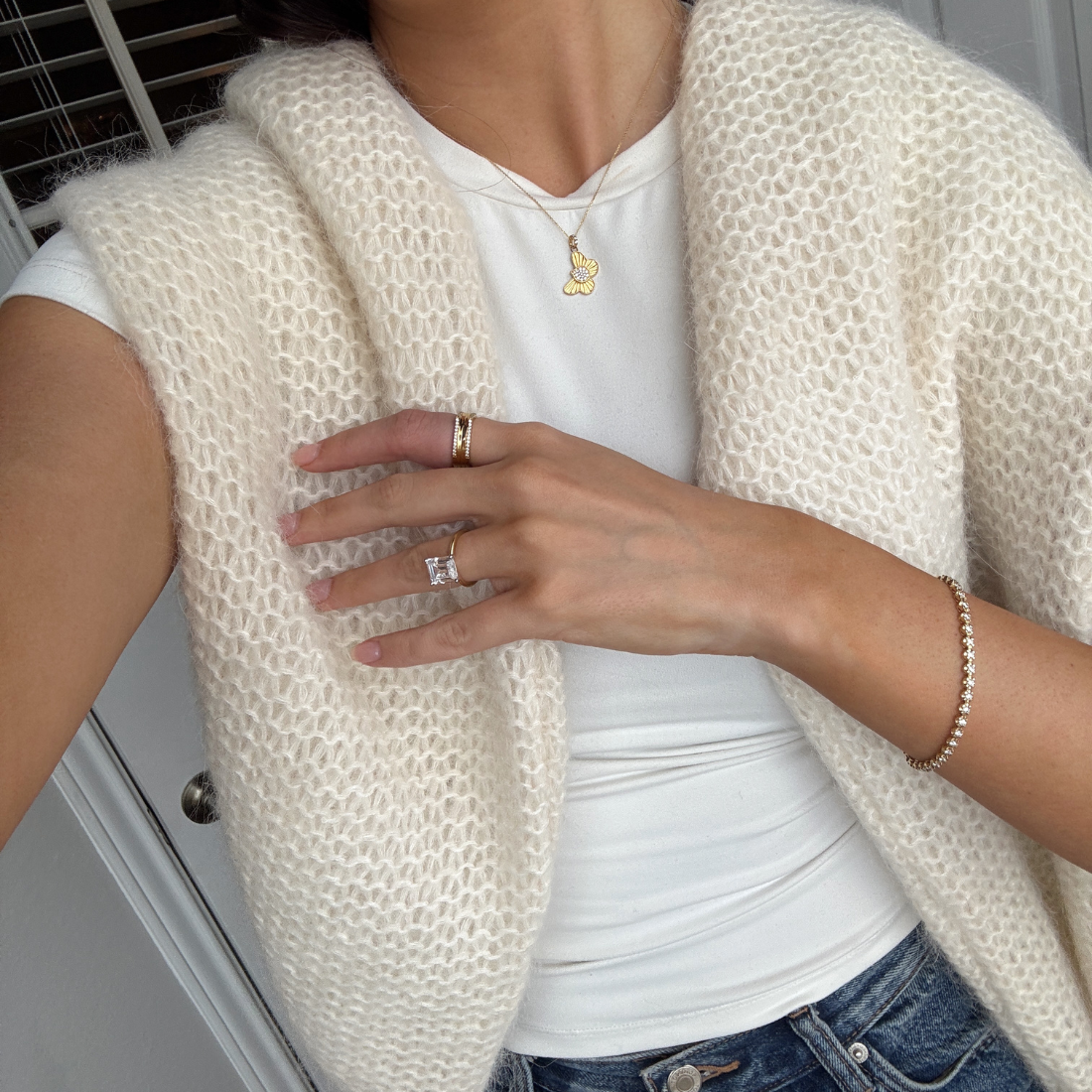
(from top to bottom) Linéaire Fine Line Shell Butterfly Diamond Pendant – PS1016, Shell Héritage Shell Tip Diamond Ring – RS1022, Emerald Cut Wide Band Solitaire Engagement Ring – Mila, and Petite Diamond Tennis Bracelet – BR103
Caring for Your Chosen Stones in Engagement Rings
After selecting the best stones for engagement rings, how to clean an engagement ring and how often to clean an engagement ring ensures that your ring’s beauty endures. Different gems have distinct care requirements; understanding these nuances keeps your ring looking as dazzling as the day you bought it.
Daily Cleaning Routines for Engagement Ring Gemstones
Remove oils, lotions, and debris by gently wiping your ring with a soft, lint-free cloth after each wear. For diamonds, sapphires, and rubies, soak the ring in a warm water solution mixed with a few drops of mild dish soap, then use a soft brush to reach underneath the stone and around prongs. Rinse thoroughly and pat dry. Avoid ultrasonic cleaners for gems like emeralds and opals, which can fracture or craze under intense vibrations.
Professional Maintenance Tips for Engagement Rings
Once or twice a year, schedule a jeweler’s inspection to verify that prongs are secure, metal is free from excessive wear, and stones remain properly seated. A professional polishing can remove surface scratches from metal, and a deep-cleaning steam treatment will restore maximum brilliance, especially important for gemstones that develop surface residue over time.
Storage and Protection of Engagement Rings
Store your engagement ring in its own padded pouch or compartmentalized jewelry box to prevent contact with other pieces that could scratch softer stones. For multi-gem collections, consider a box with individual slots or a ring organizer to keep each stone’s unique hardness properties from causing abrasions. Keep your ring away from extreme temperatures and direct sunlight, which can fade certain gemstones over time.
Handling Engagement Rings on Special Occasions
For events involving heavy-duty activities, swimming in chlorinated pools, skiing, or gardening, remove your engagement ring and store it in a secure location. Before travel, place the ring in a protective case inside your carry-on bag to avoid accidental loss. By adopting these simple precautions, you preserve both the structural integrity and aesthetic allure of your precious gem.
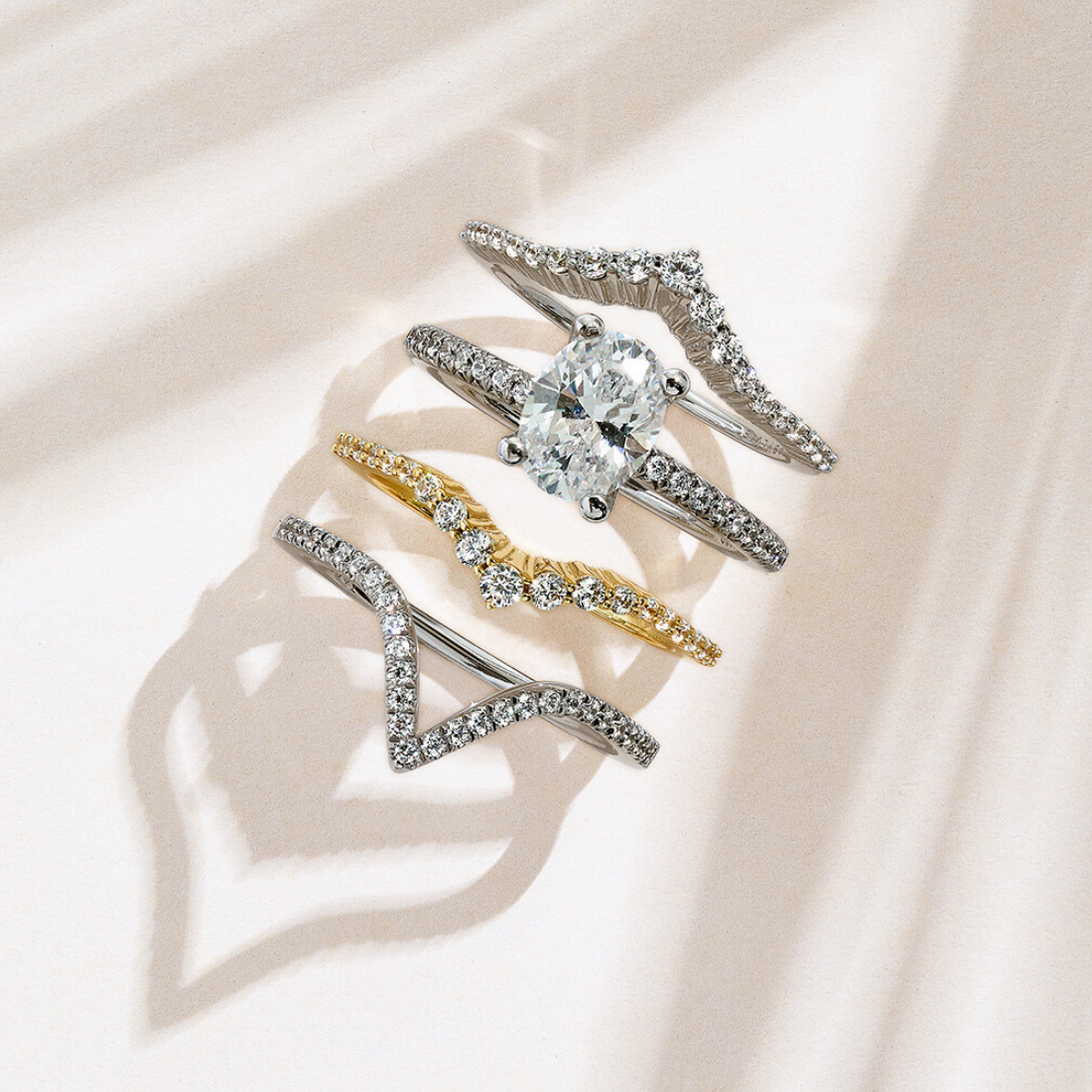
(from top to bottom) Curved Chevron Diamond Wedding Band – B0080 in White Gold, Oval Cut Classic Engagement Ring – Adorlee, Curved Chevron Diamond Wedding Band – B0080 in Yellow Gold, and Curved Chevron Diamond Wedding Band – B0107
Final Thoughts on the Best Gemstones for Engagement Rings
Choosing the best stones for engagement rings is both a practical and emotional decision. From the unmatched durability of diamonds to the rich symbolism of sapphires, rubies, and emeralds, or even the individuality of morganite and aquamarine, each gemstone offers its own story. The right choice depends on how durability, color, and personal meaning align with your lifestyle and vision for the future.
At Sylvie, our engagement rings are crafted to celebrate whichever stone you choose, offering flexibility in setting, style, and metal. With the guidance of our authorized retailers, you can confidently select a diamond or gemstone that reflects your love while knowing the design is built to last. Your engagement ring becomes more than a symbol, it becomes an heirloom to be cherished for generations.
Frequently Asked Questions About Best Stones for Engagement Rings
What is the best gemstone for engagement rings?
The best gemstone depends on balancing durability, beauty, and meaning. Diamonds remain the most durable and traditional choice, while sapphires, rubies, and emeralds offer vibrant color and symbolism. Each option has strengths depending on lifestyle and personal preference.
How do I choose the best gemstone for an engagement ring?
Start by considering your partner’s style, daily activities, and personal values. Harder stones like diamonds and sapphires are ideal for everyday wear, while softer stones may require protective settings. Color, symbolism, and budget also play key roles in guiding the decision.
What gemstones are best for an engagement ring?
Popular gemstones include diamonds, sapphires, rubies, and emeralds. For unique alternatives, couples often choose morganite, aquamarine, or garnet. The best stones combine durability with personal meaning, ensuring both long-term wear and emotional significance.
What are the benefits of gemstone engagement rings?
Gemstone engagement rings offer individuality through color, often at more accessible price points than diamonds. They carry symbolic meaning tied to personality traits, birthstones, or milestones, allowing couples to create a ring that feels personal and unique.
Are sapphires a good engagement ring alternative?
Yes. With a Mohs hardness of 9, sapphires are highly durable and available in a variety of colors, including blue, pink, yellow, and green. Their symbolism of loyalty and sincerity makes them one of the most popular diamond alternatives.
Is emerald a good choice for an engagement ring?
Emeralds are treasured for their lush green color and symbolism of growth and renewal. While softer than diamonds or sapphires, they can be used successfully in engagement rings when paired with protective settings like bezels or halos.
Are there any alternatives to diamonds that are commonly used for engagement rings?
Yes. Popular diamond alternatives include sapphires, rubies, emeralds, and morganite. These gemstones provide distinctive color and character, giving couples the option to design a ring that feels personal and expressive.
What settings work best with colored gemstones for engagement rings?
Protective settings such as halos and bezels are recommended for softer stones like emerald or morganite, as they help shield edges from damage. Harder stones like diamonds, sapphires, and rubies perform well in prong settings that allow maximum brilliance.
How do gemstones compare to diamonds?
Diamonds are unmatched in hardness and brilliance, making them the most durable choice for daily wear. Gemstones, while often softer, offer vibrant color and symbolic meaning. The decision usually comes down to tradition versus personalization.
How can I protect the gemstone on my engagement ring?
Remove your ring during activities that involve chemicals, heavy impact, or water exposure. Store it in a soft pouch or compartmentalized box when not worn. Schedule annual inspections to check prongs and settings, ensuring the stone remains secure and beautiful.
